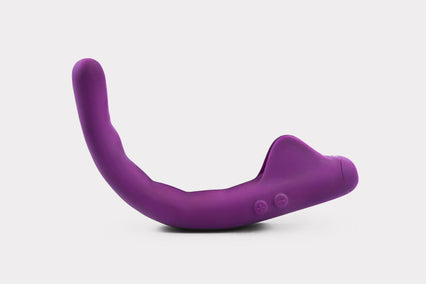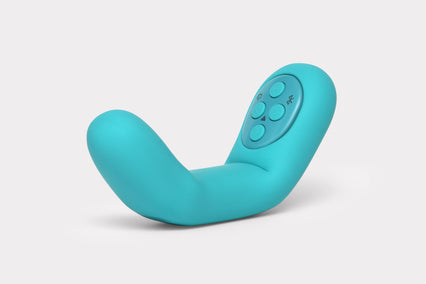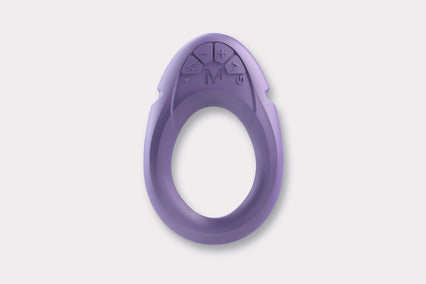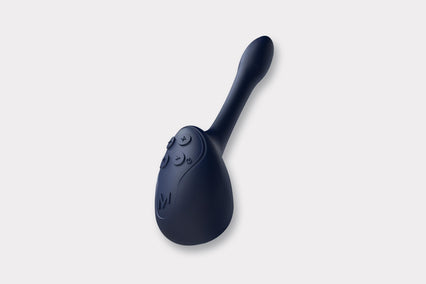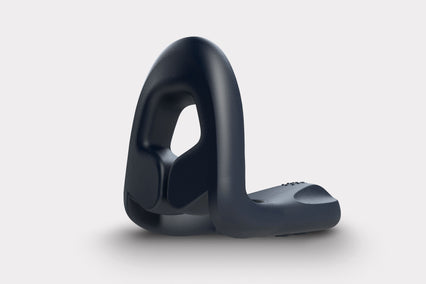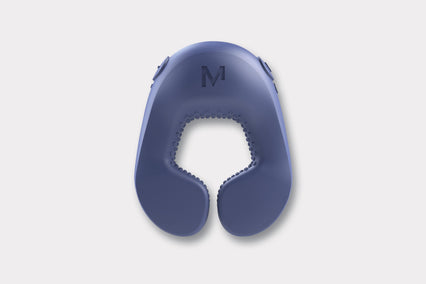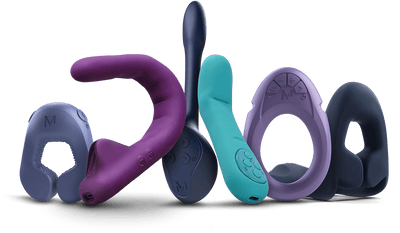While pleasure has been proven to be intrinsically linked to overall health, a majority of doctors, hospitals, and insurance companies don’t consider vibrators a legitimate healthcare resource. 1 in every 2 people reported their doctor has never mentioned the importance of sexual health and don’t believe their doctors even promote sexual health as part of wellness. That’s according to our recent survey of over 300 Americans to gauge their interest, knowledge, and experience with vibrators and physical health. With 2 out of every 3 people believing vibrators help with sexual problems and an overwhelming majority wanting their doctor to prescribe vibrators for pain, the results highlight the need for major healthcare reform. The future of sexual health is imminent. And believe it or not, vibrators are the future of sexual health.

The results of the study highlight a staggering disparity between the reality of sexual function and healthcare accessibility:
- 53% do not believe their primary doctor promotes sexual health
- Over 76% have never had any doctor or healthcare professional talk to them about the importance of sexual health
- 66% believe that vibrators can help combat sexual dysfunction and other issues (i.e., pelvic floor health, incontinence, etc.) – 32% weren’t sure
- Nearly 76% would feel comfortable with a doctor recommending a vibrator if it could relieve symptoms of sexual problems
- Over 73% said they would use FSA/HSA money towards a vibrator if this were permitted
- 96% of respondents have never had a doctor recommend or prescribe a vibrator to them
- Only 3% of respondents have had a doctor ever recommend a vibrator to them regarding sexual health
Given the increased attention on the importance of sexual health and wellness over the past decade, why is there such a disconnect between sexual health resources, like vibrators, and the medical community? Could it be because vibrators are considered non-essential luxury items? The irony here is that vibrators were historically created by Victorian doctors (Mortimer Granville anyone?) to treat medical conditions (not female hysteria) and while the technology has evolved over time to include sexual pleasure, they still have huge health benefits. An overwhelming number of respondents from the sexual health survey reported using their vibrator to assist with sexual arousal, relieve stress, and help with pelvic pain.

Or could the disconnect be due to the persistent stigma surrounding female sexuality that prevents access to funding for research and education, including educating the medical community and updating medical texts? Gender bias in healthcare services is a prevalent issue with most providers dismissing women’s health concerns and pain. Consequently, women hold the majority of chronic pain diagnoses. A historical lack of inclusive research and interest into female-specific health concerns are at the core of the problem.
Sexual dysfunction is more prevalent in women than men. Sexual problems in menopausal women in the United States is upwards of 86.5%. 77% of women were uncomfortable seeking medical attention, and 42% didn’t know treatment options were available. Women who use vibrators, like Crescendo, regularly experience increased blood flow, increased lubrication, increased sexual desire, and reported higher sexual satisfaction scores than women who did not use vibrators. 71.5% of women reported no negative symptoms associated with vibrator use, as opposed to hormone therapy replacement and other methods of sexual wellness intervention. No amount of cheeky marketing or popular opinion invalidates the growing body of evidence that vibrators are effective tools for preventing and treating sexual health issues.

Despite the scientific evidence, too many in the medical community remain unaware of the benefits of sexual health products. These numbers indicate a problem of epidemic proportions that exists due to a fundamental lack of education in major institutions around sexual health and wellness.
The disconnect is made more interesting when you look at who is sounding the alarm (hint, it’s not just sexual wellness companies.)
The World Health Organization classifies sexual health, and access to information regarding sexual health, as a fundamental human right. Following suit, the Center for Disease Control developed and issued the following definition of sexual health recommended for use in the U.S., “Sexual health is a state of well-being in relation to sexuality across the life span that involves physical, emotional, mental, social, and spiritual dimensions. Sexual health is an intrinsic element of human health and is based on a positive, equitable, and respectful approach to sexuality, relationships, and reproduction.” The CDC’s statement goes further to say, “sexual health includes the possibility of fulfilling sexual relationships.”
20 years ago, the Surgeon General issued a Call to Action to promote sexual health, stating, “we, as a nation, must address the significant public health challenges regarding the sexual health of our citizens...While it is important to acknowledge the many positive aspects of sexuality, we also need to understand that there are undesirable consequences as well-alarmingly high levels of sexually transmitted disease (STD)...unintended pregnancy, abortion, sexual dysfunction, and sexual violence.”
When governing bodies start calling attention to the sexual health conversation, it should be a litmus for paradigm shifts. And while things have improved, the healthcare accessibility gap is still substantial. Since the Surgeon General’s 2001 Call to Action, there has been one notable paradigm shift; the new era of sexual health has been harnessed by technology - sexual technology - or affectionately abbreviated as sextech.

Sexual health is a nuanced topic that involves intimacy and pleasure, but for some it isn’t so simple. Pain is the biggest barrier to a fundamental human right - pleasure, which makes sexual health a significant element in overall health and wellness. Sexual technology companies understand the power at the intersection of sexuality and technology to elevate and enhance our experience of pleasure and wellness.
Vibrators, like Crescendo, are powerful assistive technology that allow those with disabilities, sexual dysfunction, age limitations, or life circumstances to experience pleasure, some for the first time. A study on the effectiveness of Crescendo as a therapy system for Genito-Pelvic Pain & Penetration Disorder showed a 480% improvement on participant pain scores. If that percentage sounds unbelievable, that’s because it’s an unprecedented improvement for GPPPD. The study was presented at the Sexual Medicine Society of North America’s 22nd meeting.
The imperativeness to consider vibrators as legitimate medical resources is in the numbers. 1 in 10 women suffers from genito-pelvic pain and treatment options are as limited as access to treatment. As it stands, the majority of women diagnosed with GPPPD do not receive appropriate treatment. Excluding sexual health, and vibrators, from the larger picture of health has consequences, painful ones.
The writing is on the wall - vibrators are the future of sexual health. It’s only a matter of time before healthcare trends progress in the direction of inclusive sexuality, and when that happens - free vibrators for all! Okay, maybe that’s wishful thinking, but in the near future your insurance company could allow FSA/HSA spending towards a vibrator, like Crescendo, that alleviates your period pain, pelvic floor issues, or menopause.

